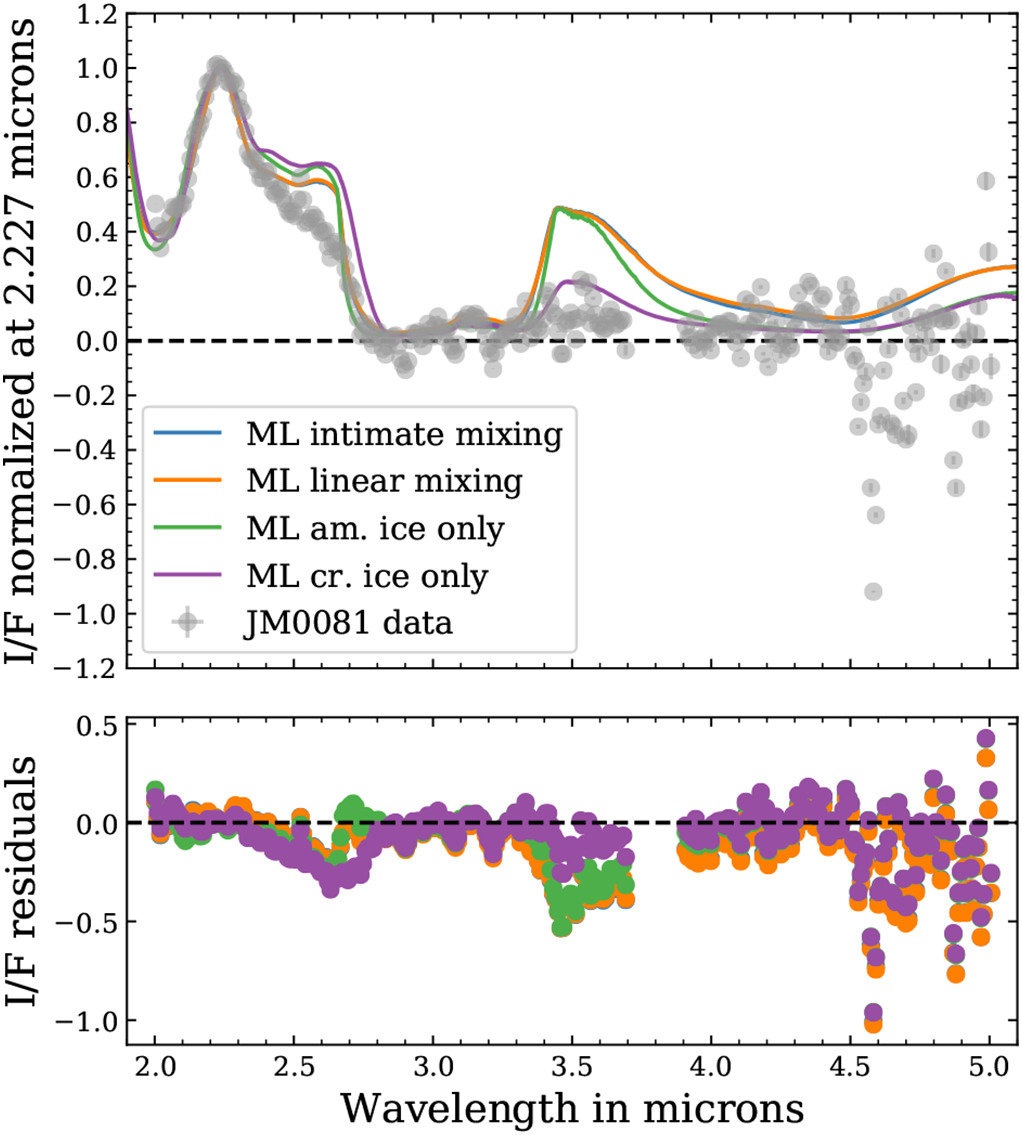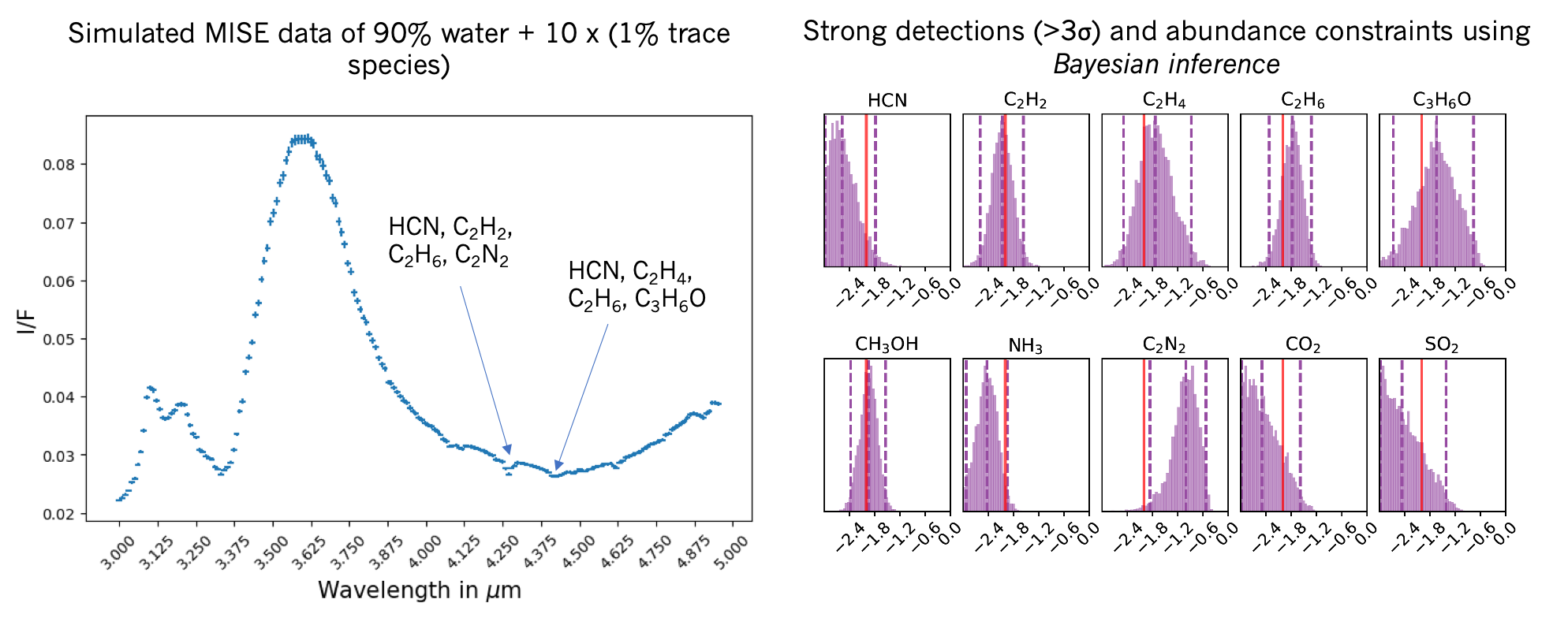
Bayesian analysis of Juno/JIRAM's NIR observations of Europa
NASA's Juno mission observed Europa using its JIRAM spectrometer and yielded several high-quality observations of the moon, which were published in 2019. I led the analysis of a small set of spectra from the Juno JM0081 observation set, using a Bayesian inference framework with the goal of constraining the abundance of amorphous and crystalline water ice, the two dominant water ice forms on solar system surfaces. We were also trying to understand the nature of the regolith - whether the constituents are intimately mixed together or whether they exist as distinct patches.
Publication(s): Mishra et al., Bayesian analysis of Juno/JIRAM’s NIR observations of Europa, 2021, Icarus, 357, 114215 (also available on arXiv)

A comprehensive revisit of select Galileo/NIMS observations of Europa
Using my Bayesian inference framework, I analyzed select Galileo/NIMS observations of Europa in the NIR (2-5 microns). My framework makes several quantitative improvements relative to prior analyses: 1) simultaneous inclusion of key Europan species - amorphous and crystalline water ice,
sulfuric acid octahydrate, CO2, and SO2, 2) physical parameters like regolith
porosity and radiation-induced band-center shift, and 3) tools to quantify confidence
in the presence of each species included in the model, and to constrain their parameters and explore degeneracies of solution.
Publication(s): Mishra et al., A comprehensive revisit of select Galileo/NIMS observations of Europa,, 2021, Planetary Science Journal 2, 183 (also available on arXiv)
Selected Presentation(s): DPS 2020 Meeting Talk
An Assessment of Organics Detection and Characterization on the Surface of Europa with Infrared Spectroscopy

As a graduate student affiliate of the IR spectrometer (MISE) team of Europa Clipper, I had a keen interest in future observations of Europa. I conducted a detection feasibility study for hitherto unseen trace hydrocarbon species, especially related to organics, on Europa to guide future observations from Europa Clipper. Hydrocarbons are spectrally rich in the near-infrared, as shown in the accompanying figure, which provides a good opportunity to detect them despite the trace abundance we expect. Through theoretical simulations of spectra of mixtures of water ice and selected trace hydrocarbons, for varying SNR and abundances, I evaluated that Clipper should be able to confidently detect hydrocarbons with sharp features, even in a complex mixture, as well as constrain their abundances. My work also demonstrates that application of Bayesian inference can help us achieve detection down to abundances of a fraction-of-a-percent of trace molecules in the 2-5 microns wavelength region.
Publication(s): Mishra et al., An Assessment of Organics Detection and Characterization on the Surface of Europa with Infrared Spectroscopy, 2023, in review, Planetary Science Journal
Selected Presentation(s): AbSciCon 2022 Poster



